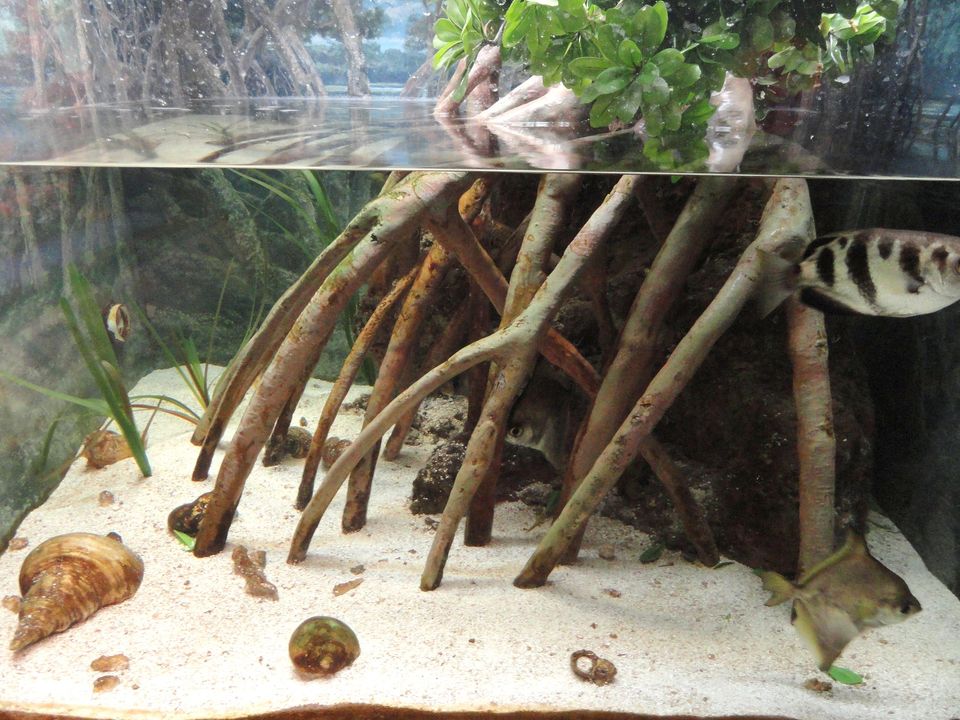Exploring the World of Tetra Fish: A Guide for Fish Keepers
Tetra fish are a staple in many aquariums due to their small size, vibrant colors, and adaptability to a variety of water conditions. However, there is much more to these fascinating fish than meets the eye. Let's dive in.

Tetra fish are a staple in many aquariums due to their small size, vibrant colors, and adaptability to a variety of water conditions. However, there is much more to these fascinating fish than meets the eye. In this article, we will delve deeper into the world of tetra fish, exploring their natural habitats, behavior, and unique characteristics.
Types of Tetra Fish
There are many different types of tetra fish available, each with its own unique appearance and characteristics. Some popular choices include:
Neon Tetras

These small, brightly colored fish are native to the Amazon basin and are known for their shimmering blue and red stripes. They are peaceful fish that do well in groups and prefer a tank with plenty of plants and hiding spots.
Cardinal Tetras

These fish are native to South America and are characterized by their deep blue bodies and bright red fins. They are peaceful fish that do well in groups and prefer a tank with a moderate current and plenty of plants.
Black Widow Tetras

As their name suggests, these fish have a striking black and red coloration and are known for their aggressive behavior. They are best kept in a tank with other robust fish and plenty of hiding spots.
Rummy Nose Tetras

These fish are native to South America and are known for their distinctive red noses and silver bodies. They are peaceful fish that do well in groups and prefer a tank with plenty of plants and a moderate current.
Natural Habitats
Tetra fish are native to a variety of freshwater habitats in South America, including the Amazon basin, rivers, and streams. In their natural habitats, tetra fish can be found in shallow, slow-moving waters with plenty of plants and hiding spots.
Behavior
Tetra fish are generally peaceful and social fish that do well in groups. They are active swimmers and enjoy exploring their environment, so it is important to provide them with a tank that is large enough to accommodate their needs.
Some tetra fish, such as the Black Widow Tetra, can be aggressive towards other fish and should be kept with caution. It is important to research the specific behavior of your particular type of tetra fish and choose tank mates accordingly.
Unique Characteristics
Tetra fish have a number of unique characteristics that set them apart from other aquarium fish. For example, the Neon Tetra has a shimmering blue and red stripe pattern that is caused by light refraction through its iridophores, specialized cells that reflect light.
The Rummy Nose Tetra is named for its distinctive red nose, which is caused by a pigment called erythrin. This pigment is also found in the fish's gills and fins, giving it a reddish-orange color.
Care Requirements
Proper care is essential for the health and happiness of your tetra fish. Here are some key care requirements to keep in mind:
Water Quality
Tetra fish are sensitive to poor water quality, so it is important to keep the water in your tank clean and well-filtered. Use a high-quality filter and perform regular water changes to remove excess waste and chemicals from the water. It is also important to maintain the proper pH level and temperature for your specific type of tetra fish.
Diet
Tetra fish are omnivorous and should be fed a varied diet of both plant-based and protein-based foods. Some good options include flakes, pellets, and live or frozen brine shrimp. Avoid overfeeding your tetra fish, as excess food can lead to poor water quality and unhealthy fish.
Tank Size and Set-Up
Tetra fish are small and do not require a lot of space, but it is important to provide them with a tank that is large enough to accommodate their needs. As a general rule, tetra fish need at least 10 gallons of water per fish. It is also important to include plenty of hiding spots and plants in your tank to provide your tetra fish with a natural environment.
Incorporating Tetra Fish into Your Tank
When introducing tetra fish into your tank, it is important to acclimate them slowly to their new environment. This can be done by gradually mixing the water from their bag with the water in your tank over a period of about 30 minutes.
It is also important to consider the size and compatibility of your other fish when adding tetra fish to your tank. Some tetra fish, such as the Black Widow Tetra, can be aggressive towards other fish, so it is important to choose tank mates that will get along well with your tetra fish.
Finally, it is important to monitor the health of your tetra fish and seek medical attention if necessary. Signs of illness in tetra fish include loss of appetite, lethargy, and changes in coloration. If you notice any of these symptoms in your tetra fish, it is important to seek the advice of a veterinarian or experienced aquarium hobbyist as soon as possible.
In addition to these general care guidelines, it is also important to research the specific care requirements of your particular type of tetra fish. Some tetra species may have unique needs that differ from the general care guidelines outlined above.
Conclusion
Tetra fish are a popular and rewarding choice for aquarium hobbyists due to their small size, vibrant colors, and adaptability to a variety of water conditions. By understanding their natural habitats, behavior, and unique characteristics, and providing them with the proper care, you can ensure their health and happiness in your tank. With a little bit of knowledge and effort, you can successfully incorporate tetra fish into your tank and enjoy their beauty and personality for years to come.




